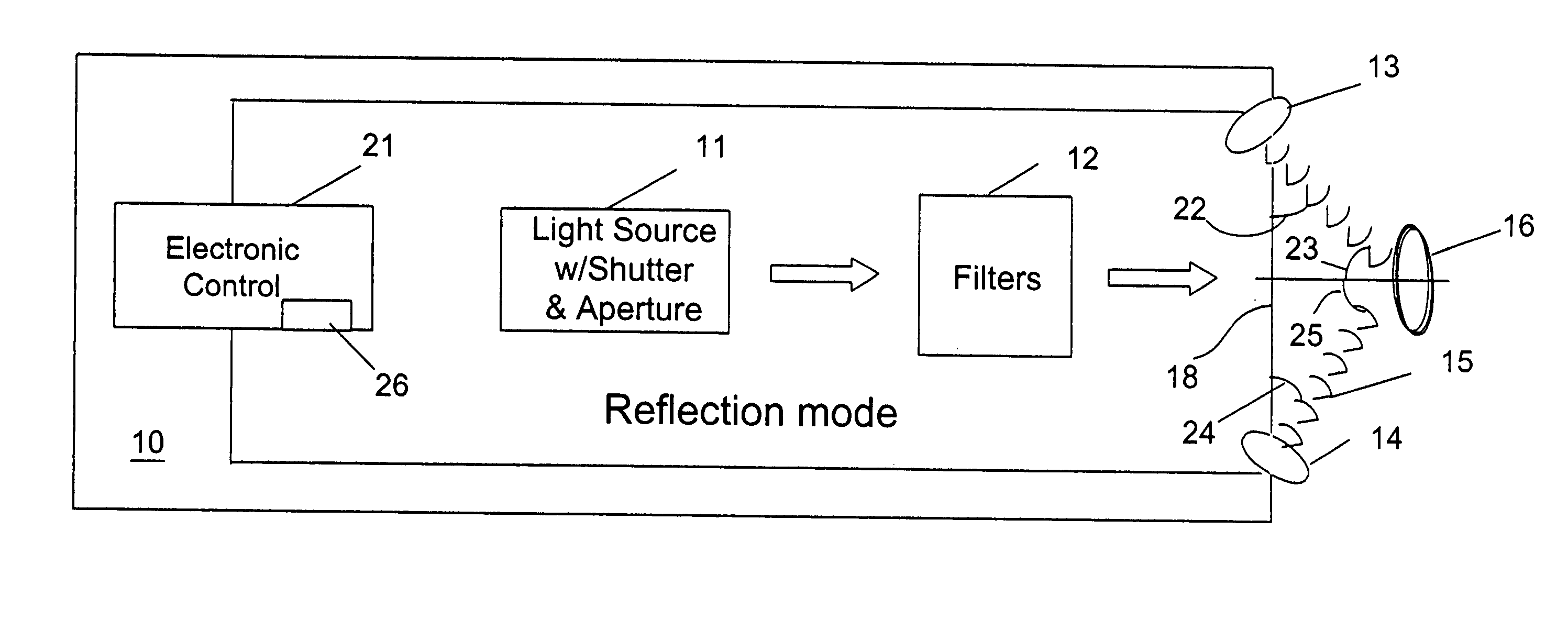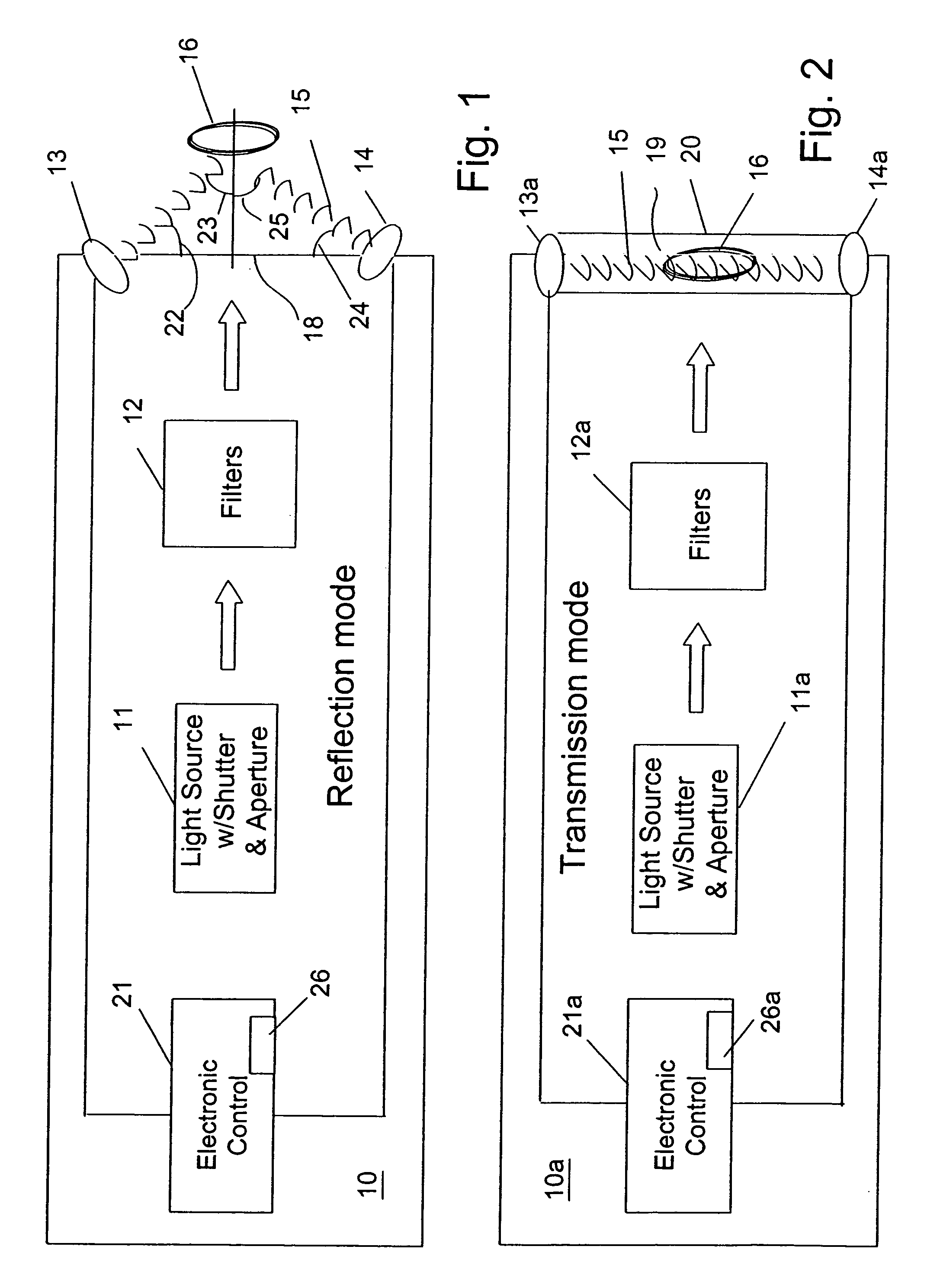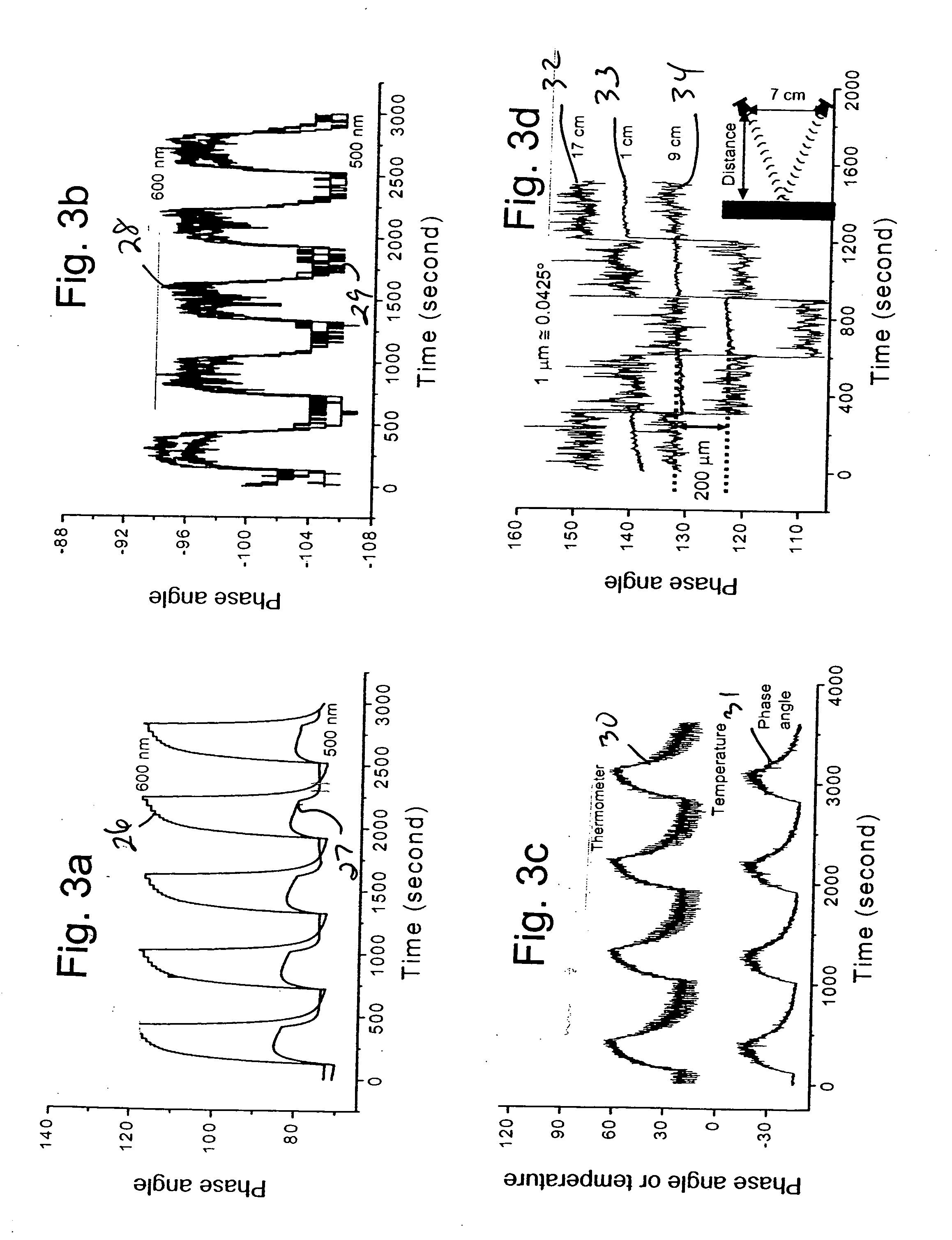Method and apparatus for remote sensing utilizing a reverse photoacoustic effect
a reverse photoacoustic and remote sensing technology, applied in the field of methods and machines for spectrometry, can solve the problems of cumbersome and expensive existing techniques based on laser detection and ranging (ladar) and hyper-spectral imaging, and is not ideal for the desired quick and widespread deploymen
- Summary
- Abstract
- Description
- Claims
- Application Information
AI Technical Summary
Benefits of technology
Problems solved by technology
Method used
Image
Examples
Embodiment Construction
[0028] Referring to FIGS. 1 and 2, a machine 10 for practicing the method of the invention has a controllable light source 11 with a shutter and an aperture for controlling a duration and a width of a light beam. The machine 10 is provided with suitable user controls, such as on-off switches and a pushbutton or trigger-operated switch to momentarily apply the light source. One suitable example of a controllable light source 11 for the UV-visible region uses a 300-Watt Xenon lamp and accompanying power supply from Thermal Oriel. The light source 11 can also be a source for producing electromagnetic radiation in the near infrared range, the far infrared range, lasers of different wavelengths, and other tunable sources. A group of interference filters 12 is selectively and successively inserted along the path of the light to allow light with respective narrow wavelength bands to pass (Melles Griot). In test experiments, ethanol solutions of a plurality of dyes are used as adjustable li...
PUM
 Login to View More
Login to View More Abstract
Description
Claims
Application Information
 Login to View More
Login to View More - R&D
- Intellectual Property
- Life Sciences
- Materials
- Tech Scout
- Unparalleled Data Quality
- Higher Quality Content
- 60% Fewer Hallucinations
Browse by: Latest US Patents, China's latest patents, Technical Efficacy Thesaurus, Application Domain, Technology Topic, Popular Technical Reports.
© 2025 PatSnap. All rights reserved.Legal|Privacy policy|Modern Slavery Act Transparency Statement|Sitemap|About US| Contact US: help@patsnap.com



